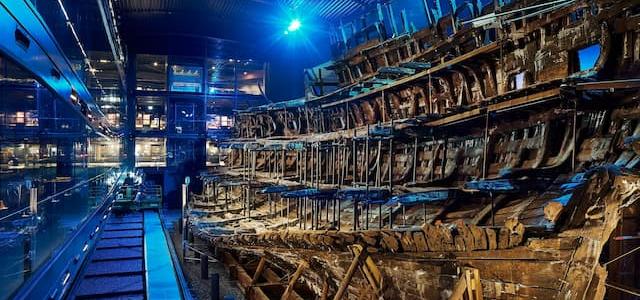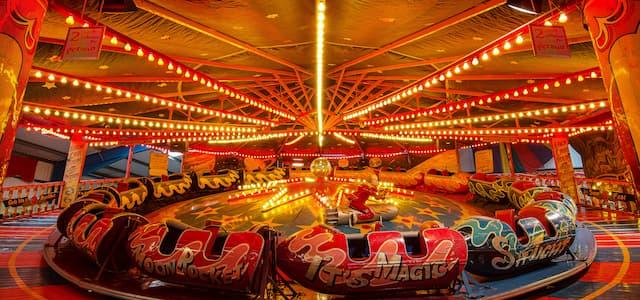
Silver celebrations for the nation’s heritage
The National Heritage Memorial Fund (NHMF) began its Silver Jubilee celebrations today (14th July) with a very special announcement made at the Victoria and Albert Museum.
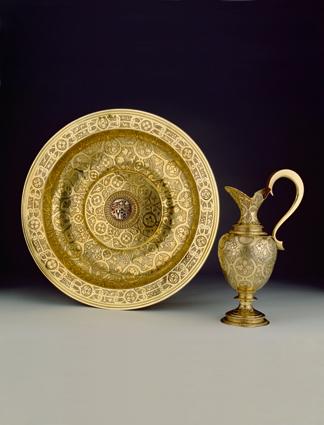

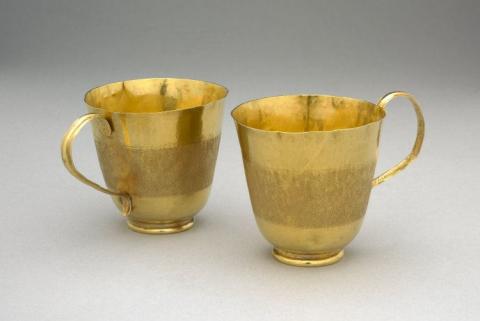
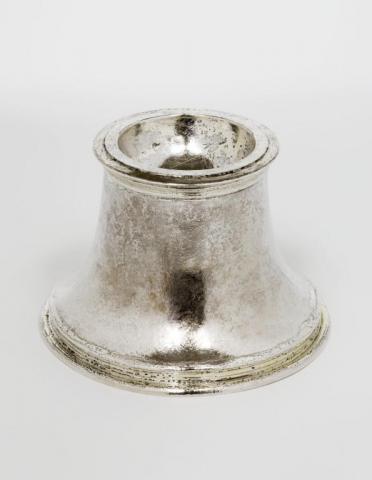
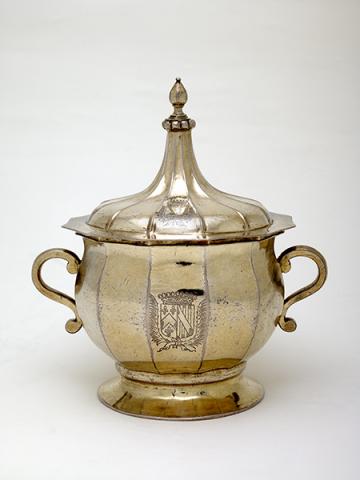
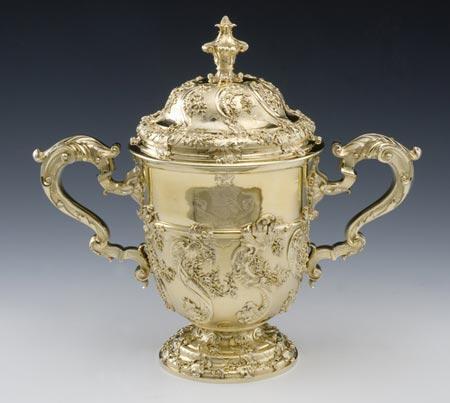
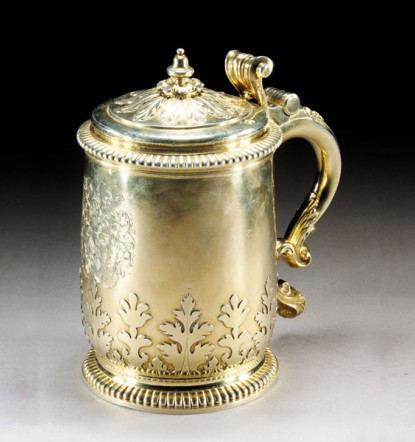

NHMF grants totalling over £850,000 have helped save some of the finest items from the Cassel Silver collection, one of the most important additions to the nation’s silver collection. A major grant of £404,445 also came from the independent charity the National Art Collections fund (Art Fund).
The pieces range from the Palmerston Chocolate Cups, the only known cups of their kind in the world, to a very rare example of a pre-1500 personal English drinking vessel. They have historic association with some of England’s most prominent families and reveal much about our social history. In a private collection since the early C20th, the pieces have rarely been seen by the public. Thanks to today’s news, they now belong to the nation and will be given new homes in a number of the UK’s museums and galleries.
Stephen Johnson, Head of the National Heritage Memorial Fund, said: “What better way to start off NHMF’s Silver Jubilee year than to help save this rare collection of silver for the nation.It joins a treasure trove of heritage saved by NHMF over the last 25 years, which acts as a lasting reminder of the rich history of the UK and as a poignant memorial to those who gave their lives for this country.”
The Cassel Silver Collection was assembled by Sir Ernest Cassel (1852-1921), a Jew who arrived in Liverpool from Germany in1869 with just a violin and bag of clothes. He went on to accumulate a fortune through merchant banking, becoming the most powerful individual financier in Europe of his time. He was also a friend and advisor to the Prince of Wales, later Edward VII, and a generous benefactor of charities such as the Red Cross. With his fascination for all things English, he was able to acquire some of the most important pieces on the market at the time.
The NHMF was set up in 1980 to save the best of our heritage in memory of those who gave their lives for the UK in armed conflict. Over the past 25 years, NHMF has played a vitally important role in saving some of the most iconic collections, landscapes and places. Today the heritage saved is arguably the most original and extensive ‘war memorial’ in the world, made up of over 1,200 items from the Flying Scotsman to the Waterloo Dispatch and the Three Graces.
Commenting on a quarter of a century of the NHMF, David Lammy MP, Minister for Culture, said: “The NHMF has done a fantastic job of saving some of our very best heritage over the last 25 years. It is particularly fitting to celebrate this legacy in the year of the 60th anniversary of the end of World War II.”
David Barrie, Director of the National Art Collections Fund, said: “Over the last 25 years, the National Heritage Memorial Fund has played a decisive part in saving for the nation some of the greatest works of art – very often in partnership with the National Art Collections Fund. We salute its achievements and hope very much that the government will recognise its vital and distinctive contribution by restoring its funding to a level at least equivalent to that which it enjoyed at its inception.”
New homes for the Cassel Silver
In 2004 an offer was made to the nation by one of Sir Ernest's descendants through Sotheby's to purchase a core group of these pieces. Thanks to the douceur available to British institutions, a special net price could be agreed but even then no museum in the UK was in a position to purchase the whole group. Consequently the Ashmolean Museum with the Victoria and Albert Museum organised a consortium of museums to purchase pieces which would have special relevance to their own collections. Six of the nine museums applied to NHMF for money to help secure eleven of the items and they were awarded the grants announced today.
The NHMF grants to help the consortium of museums to acquire items from the Cassel Silver Collection join a package of funding. Starting at the Ashmolean Museum with a special exhibition from 2 August to 6 November 2005, the silver will now tour the country before being housed in the permanent collections of the respective museums.
James Miller, Deputy Chairman of Sotheby’s UK, who organised the private sale, said: “The Cassel Collection is a unique and wonderful assembly of great pieces of silver, and we are delighted to have been instrumental in ensuring that it remains in Britain and accessible to all. This sale is the latest in a long line of private treaty sales organised by Sotheby’s which have enabled works of art and collections of national importance to remain in Britain.”
The Ashmolean Museum
The Ashmolean Museum received £558,345 from the NHMF to acquire three pieces:
The Proctor-Mosley ewer & basin
Sale price £877,718 – NHMF grant £523, 218
One of very few sets of its kind to survive, the Proctor-Mosley Ewer and basin are among the most important pieces of Elizabethan plate. They were intended as heirloom pieces for the newly created merchant or ‘middle’ class, symbolic of the continuity of family.
The silver also played a crucial role in dining rituals, both as presentation pieces and the centre piece of a buffet table, signifying wealth, taste and status. They had a very practical use too as a means of cleansing hands with rose water between courses - particularly important as people regularly used their hands to eat.
This set was originally made for the proctor family and incorporates their family crest as well as that of the Mosley family who are linked by marriage. It is of quintessential Renaissance design. Silver gilt, they are decorated with strap work containing classical forms of flowers, leaves and shells, and both hallmarked London 1592-3.
Bell salt
Sale price £150,226 – NHMF grant £35,127
Bell salts have a unique part in English social history as where people sat at table in relation to the salt was indicative of social status; servants and dependants sat ‘below the salt’.
This Bell Salt is a particularly beautiful survival as, being of lighter weight and plain design, such items were not valued once their useful life was over. It is one of the earliest examples of the ‘double’ form and was made in London. The hallmark dates it to 1597. It is silver gilt, chased with strap work, foliate decoration and marked with a shield containing the initials YHI, as yet unidentified.
The British Museum
The British Museum received £29,700 to acquire the Palmerston Chocolate Cups – the only known cups of their kind
The Palmerston Chocolate Cups
Sale price £54,161 – NHMF grant £29,700
Made in London c. 1700 by John Chartier, a leading Huguenot goldsmith, using gold from melted down mourning rings inherited by Anne Houblon, Lady Palmerston.
By the middle of the 17th-century a custom of giving memorial rings, inscribed with the deceased’s name and date of death, had developed. These were usually passed down through family members. Exceptionally, in this case, the rings were melted down and turned into memorial chocolate cups. These cups are the only known examples of mourning rings being adapted in this way. They are also unique examples of chocolate cups made in gold and in this they provide a poignant addition to the Museum’s existing group of documentary gold plate and its outstanding collection of mourning rings. Of special interest for the British Museum is the link to Sir Hans Sloane, whose collections became the foundation of the Museum in 1753, for it was Sloane who, around 1690, invented the mixing of chocolate with milk to make it more palatable.
Inscriptions on both on insides of the handles and the base read: DULCIA NON MERUIT QUI NON GUSTAVIT AMARA (he has not deserved sweet unless he has tasted bitter) and MANIBUS SACRUM (to the shades of the departed); on the other Think on yr Friends & Death as the chief and MORTVIS LIBAMVR (let us drink to the dead). Lady Palmerston bequeathed them to her husband, 1st Viscount Palmerston, in 1735, and they have descended through the Palmerston family.
The Geffrye Museum
The Geffrye Museum received £14,724 to acquire a Silver Capstan Salt
Silver Capstan Salt
Price 38,809 – NHMF grant £14,724
This capstan salt is an exceptionally rare survival; an everyday object from a relatively ‘ordinary’ household. A plain capstan salt of this quality is typical of the type that would have been owned by a moderately successful businessman of an emerging ‘middle class’. Previous to the post-Renaissance rise of the merchant class, there would be little call for plain but good quality tableware.
The salt is parcel-gilt and bears a London hallmark for the year 1580. Slightly pitted, which suggests that it has been buried either in the ground or at sea, this piece nonetheless retains its original form and gilding. It will be very suitable for the Geffrye Museum's displays, which aims to show middle-class homes from around 1550 to the present day.
The Museum of London
The Museum of London received £50,000 to acquire a 1652 Fauconberg Porringer
1652 Fauconberg Porringer
Price £100,000 – NHMF grant £50,000
Only six examples of this particular type of twelve-sided, covered porringer survive. This piece is plain silver, with a hinged lid and the bowl is engraved with the armorial badge of Thomas Belasyse, Viscount Fauconberg and of his first wife, daughter of Viscount Castleton.
Despite his second marriage to the daughter of Oliver Cromwell, Mary Cromwell, Fauconberg reverted to Royalist sympathies with the advent of the restoration and was a member of Charles II’s Privy Council. Famed for their collections of decorative arts, the Fauconbergs were also noted socialites, mentioned in both Samuel Pepys’s diaries and Jonathan Swift’s Journal.
Lacking the ornamental element of most historic silver plate, the real splendour of this piece lies in its sophistication and quality despite the socio-political constraints of the time, in which it was made. Commonwealth silver was invariably plain or sparingly ornamented and the panelled construction of this piece would have provided a subtle form to convey its importance. The vessel bears a London hallmark, dated 1652-53, and the maker’s mark ES. It is speculated that this may be London Goldsmith, Edward South.
The National Museums and Galleries, Wales
The National Museums and Galleries, Wales, received £33,000 to acquire a 1733 Cup and Cover and 1698 Tankard
1733 Cup and Cover
Sale price £36,000 NHMF grant £18,000
This magnificent cup is one of a group of closely related examples that suggests the interdependence of London Goldsmiths in the early 18th century as they shared models in an attempt to keep pace with the latest Rococo fashions.
Covered cups were major pieces of display plate during the 18th century and this example is of exceptional size and quality. It is decorated entirely in the Rococo style and bears the mark of Paul Crespin (1694-1770), one of the most cosmopolitan and sophisticated makers of his day. The item has strong associations with one of the great fortunes of 19th century Wales as the coat of arms of the original owner of the cup have been erased, and replaced with those of William Lewis Hughes (1767-1835), one of Wales’s richest sons.
1698 Tankard
Price £29,859 – NHMF grant £15,000
Tankards were a common form of plate in Britain in the second half of the 17th century, but examples by Huguenot makers are extremely rare. This piece, in silver-gilt, is one of the largest to survive and is a French re-working of an essentially English object.
The Tankard is the work of Daniel Garnier a member of a Huguenot family from Vitry-le-Francois, who arrived in London in 1684. Very few other works by Garnier have survived.
The cover is stepped and domed rising to an acorn knob, with a leaf ornament. A cartouche below the helmet of the Tankard is engraved with the arms of the Harley Family of Brompton Bryan, Herefordshire, Earls of Oxford between 1711 and 1853, who were also major landowners in Radnorshire.
The Victoria and Albert Museum
The Victoria and Albert Museum received £164,269 to acquire an exceptionally rare 1496 Beaker
1496 Beaker
Price £298,591 – NHMF grant £164,269
This is the earliest piece of English silver from the Cassel Collection and is an exceptionally rare survival. It is also the earliest English silver beaker in existence and the only surviving piece of domestic silver made in England in 1496-7.
It was probably presented as a christening gift to Thomas Whately (1685- 1765) explaining the TW initials that seem to have been pricked onto the surface in the 17th century.
A display, which shows all the consortium purchases, will begin at the Ashmolean until early November; it will subsequently travel to Birmingham, Cardiff, Temple Newsam (Leeds), and the Museum of London.
Notes to editors
The National Art Collections Fund
The National Art Collections Fund (Art Fund) is the UK’s leading art charity. It has 80,000 members. Since its foundation in 1903, the Art Fund has helped UK public collections acquire 850,000 works of art. In 2004 the Art Fund offered £4.3 million to museums and galleries and distributed 11 gifts and bequests. The Art Fund is independent of government and raises money from membership subscriptions, donations and legacies.
The Art Fund has led successful campaigns to save for the nation masterpieces such as Velázquez’s ‘Rokeby Venus’, the Leonardo Cartoon and The Macclesfield Psalter.
Total figures for the Cassel Collection
Net total £1,687,916.
Total NHMF grants £850,038
Total NACF grants £404,445
The Cassel Collection
Funding for each item acquired was raised as follows:
Ashmolean:
Ewer and basin:
Net £877,718. NHMF £523,218; NACF £220,000; Friends of the Ashmolean £15,000; the balance from various Museum trust funds and private donors.
Bell salt:
Net £150,226. NHMF £35,217; NACF £30,000; MLA/V&A Fund £25,000; the balance from various Museum trust funds and private donors.
British Museum:
Net £54,161; NHMF: £29,700; NACF: £13,500; Private Donations: £7,829; British Museum: £3,132
Geffrye Museum:
Salt
Net £38,809, NACF £15,000, National Heritage Memorial Fund £14,724, MLA/V&A Purchase Grant Fund £7,000, Geffrye Museum £2,085
Museum of London
Porringer
Net £100,360; NHMF £50,000; NACF £25,000; MLA/V&A £10,000; the balance from Museum trust funds.
V&A
Cassell Beaker
Net price £298,591; NHMF £164,269; NACF £59,622; Worshipful Company of Goldsmiths £15,000, the balance from the V&A's Central Acquisition Fund and private donors.
The National Museums and Galleries, Wales
Silver gilt cup and cover,
Net price £36,000. NACF grant £8,000. NHMF grant £18,000
Sliver gilt tankard
Net price £29,859. NACF grant £6,000. NHMF grant £15,000
The other items acquired by three museums that did not to apply to NHMF for funding were as follows:
- Temple Newsam House, Leeds acquired a James I silver-gilt steeple cup and cover, London, 1607
- Birmingham Museum and Art Gallery acquired a Charles I standing cup, London, 1641
- Fitzwilliam Museum, Cambridge acquired a Charles II silver ginger jar, London, 1674, by Jacob Bodendick
Further information
Sam Goody, NHMF press office.
Phone: 020 7591 6033.
Alison Cole or Diana Evans, Nation Arts Collections Fund press officers
Phone: 020 7225 4820/22. Website: www.artfund.org
Proctor-Mosley ewer & basin

